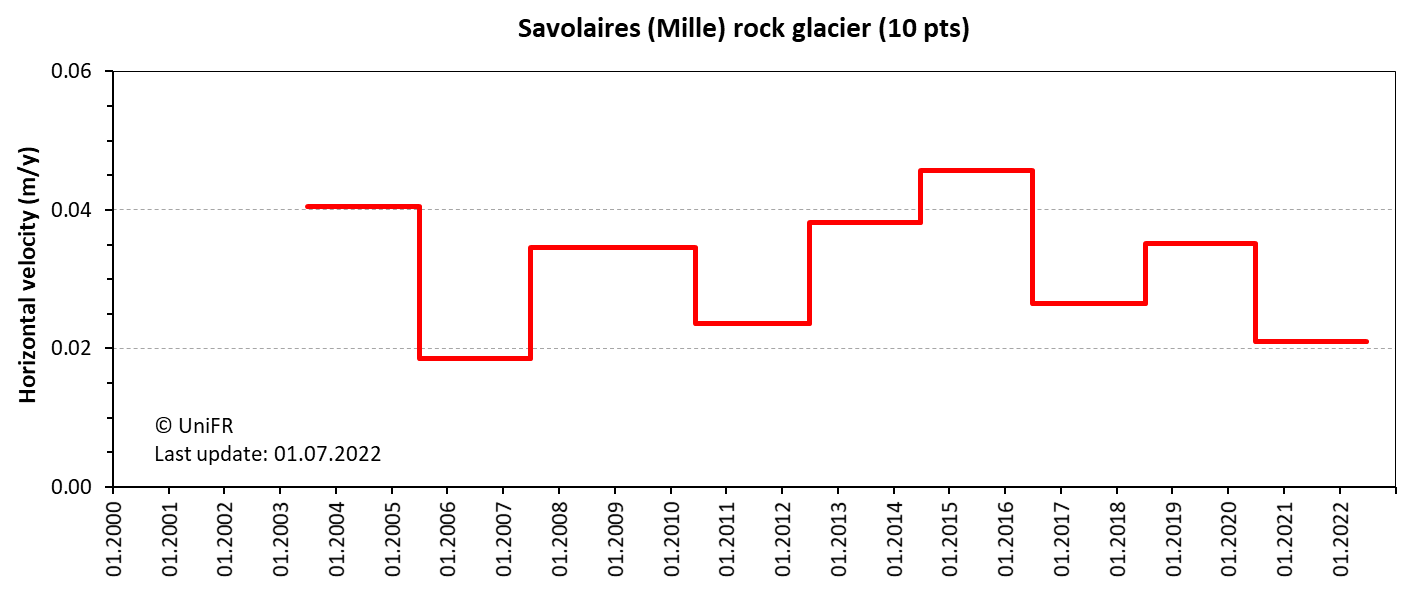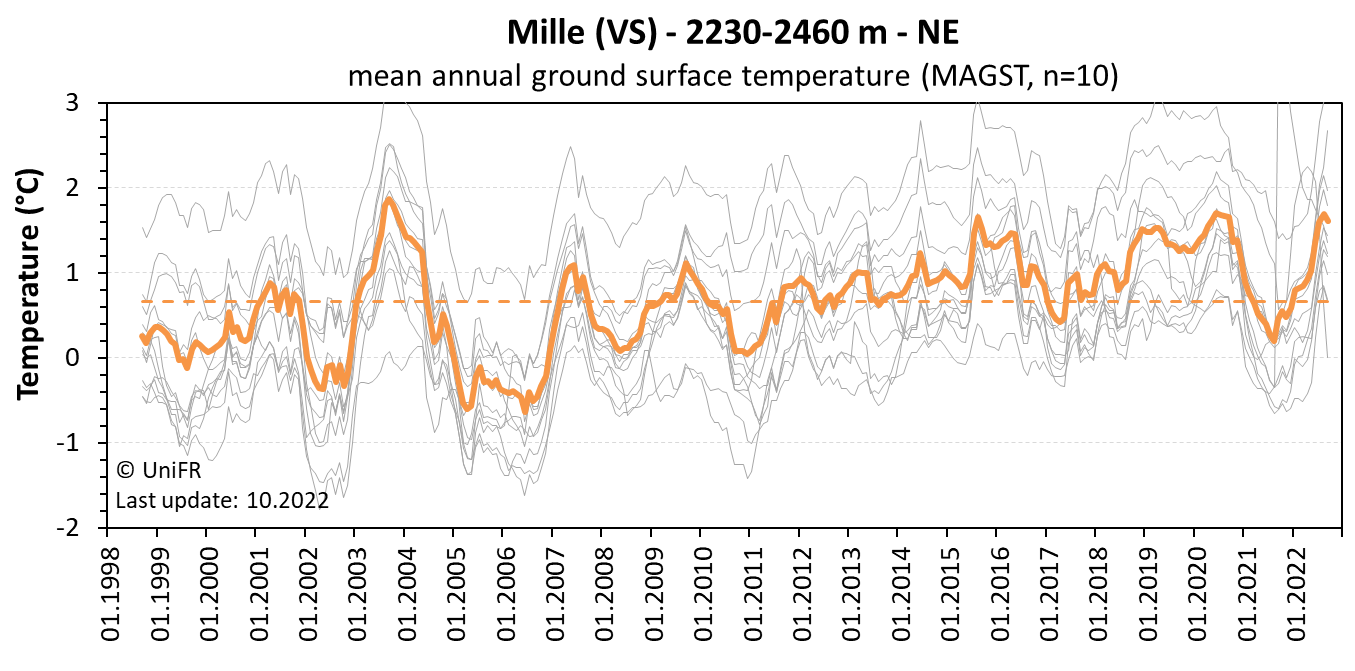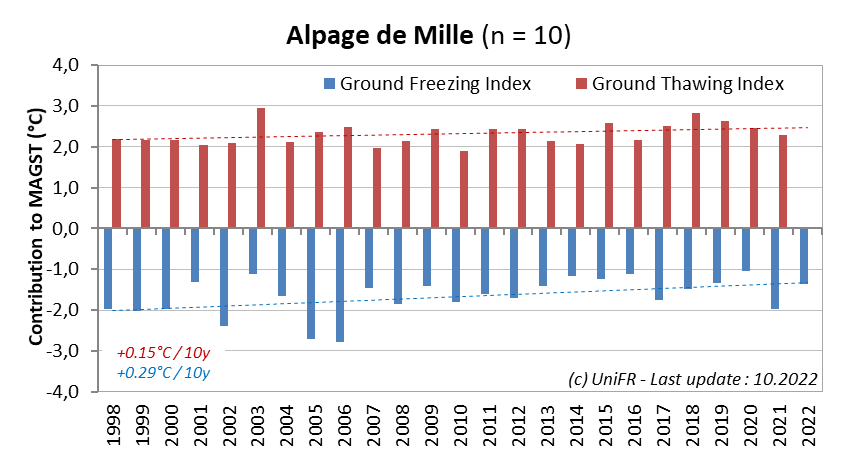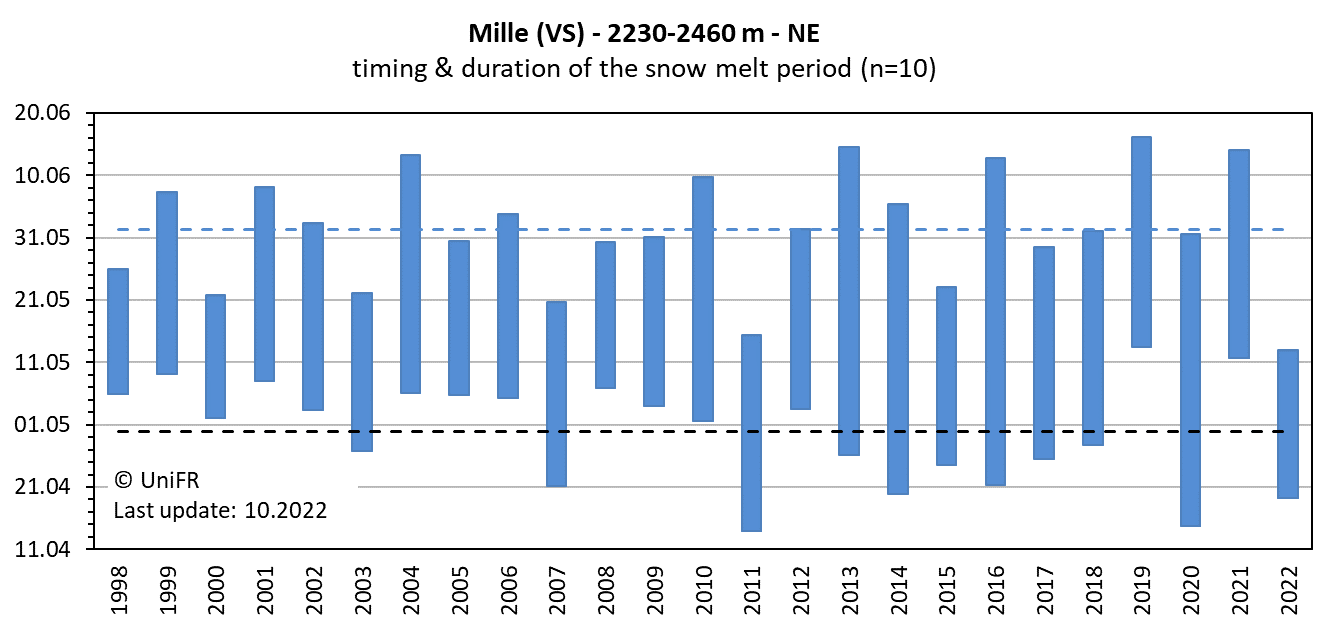MILLE (VS)
Inactive rock glaciers
Elevation: 2220-2460m - Massif: Valais Alps (Grand-Combin) - Commune: Bagnes (VS)
Several rock glaciers (Savolaires, Ecuries de Mille, Basset) were formed at the foot of the east slope of Mont Brûlé. Their origin is most likely to be of an older age (end of the Late-Glacial, beginning of the Holocene). The different measurements have proven the presence of permafrost to a bigger or lesser extent, favored by an air circulation mechanism inside a coarse boulder layer at the surface (convection) as well as through the entire rock glacier (advection). GPS measurements indicate that the Savolaires rock glacier is still moving at a few centimeters per year in spite of its inactive appearance. First observations started in 1995-1996 (geoelectrical and thermal). The site is integrated as a « Kinematics » site into the PERMOS (PERmafrost MOnitoring in Switzerland) monitoring network.
-
Measurements and observations
Thermal (ground surface temperature : GST, BTS)
Geodetic (GNSS)
Meteorological (weather station since 1997, snow stake) -
Figures

Occurence/absence of permafrost based on electrical resistivity measurements (data: 1995-1997).

Measured horizontal flow field (mean annual velocity). Savolaires rock glacier

Annual horizontal surface velocity. Mean of a set of points selected in the most active part of the Savolaires rock glacier.

Mean annual ground surface temperature. The orange curve represents the mean temperature of the n sensors installed on the site (grey curves). The orange dotted line is the mean temperature observed on the site since the beginning of the measurements.

Annual ground freezing and thawing indices (calculated during the hydrological year) with indication of the respective trend since the beginning of the time series. Mean of the n sensors installed on the site.

Annual dates of the start and end of the snowmelt period (zero curtain phase). Mean of n sensors placed on permafrost terrain. The dotted lines show the mean dates since the beginning of the time series.
-
Collaboration
-
Publications
PERMOS 2019. Permafrost in Switzerland 2014/2015 to 2017/2018. Noetzli, J., Pellet, C., and Staub, B. (eds.), Glaciological Report (Permafrost) No. 16-19 of the Cryospheric Commission of the Swiss Academy of Sciences, 104 pp, DOI:10.13093/permos-rep-2019-16-19.
PERMOS (2016). Permafrost in Switzerland 2010/2011 to 2013/2014. Noetzli, J., Luethi, R., and Staub, B. (eds.), Glaciological Report (Permafrost) No. 12-15 of the Cryospheric Commission of the Swiss Academy of Sciences, 85 pp. (pdf)
PERMOS (2013). Permafrost in Switzerland 2008/2009 and 2009/2010. Noetzli, J. (ed.), Glaciological Report (Permafrost) No. 10/11 of the Cryospheric Commission of the Swiss Academy of Sciences, 80 pp. (pdf)
Delaloye, R., Lambiel, C. (2005). Evidence of winter ascending air circulation throughout talus slopes and rock glaciers situated in the lower belt of alpine discontinuous permafrost (Swiss Alps). Norwegian Journal of Geography. Vol. 59/2, 194-203. DOI: 10.1080/00291950510020673
Delaloye, R. (2004). Contribution à l’étude du pergélisol de montagne en zone marginale. PhD thesis, Fac. Sciences, Univ. Fribourg, GeoFocus 10 (pdf)
